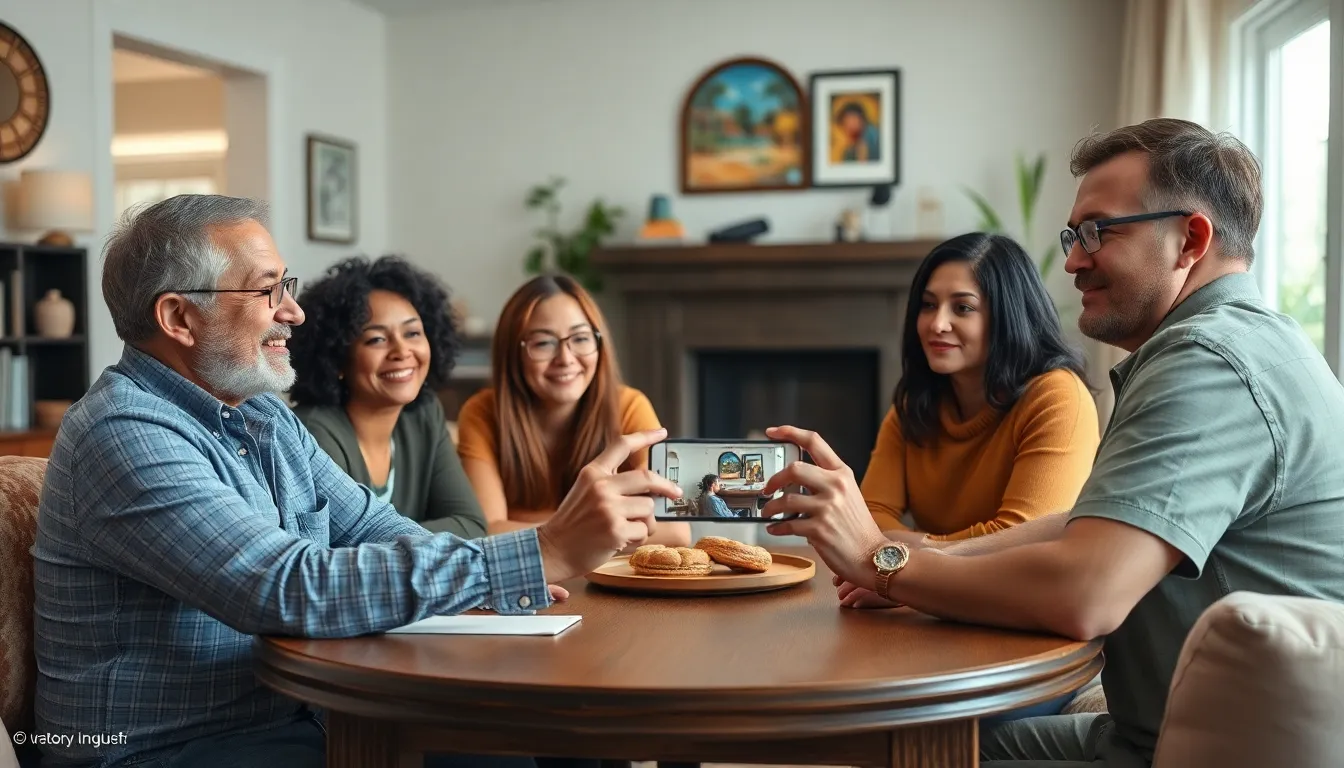In a world where every word counts, wouldn’t it be great to have a trusty sidekick that captures those priceless conversations? Whether it’s a heart-to-heart with a friend or an important business meeting, recording conversations on an iPhone can save the day. Imagine never forgetting that brilliant idea or hilarious quip again—your future self will thank you!
With just a few taps, iPhone users can turn their device into a personal recording studio. No more scribbling notes that might as well be in hieroglyphics. Instead, they can focus on the chatter while their iPhone does the heavy lifting. Ready to discover how to record conversations like a pro? Let’s dive into the simple steps that’ll have you capturing every word in no time.
Table of Contents
ToggleHow to Record a Conversation on My iPhone
To record a conversation on an iPhone, users can utilize the built-in Voice Memos app. This app comes pre-installed on all iPhones. First, open the app from the home screen. Tap the red circular button to start recording.
Participants should ensure that the iPhone is positioned close enough to capture the audio clearly. While recording, it’s critical to maintain a quiet environment. This helps minimize background noise and enhances audio quality.
Using third-party apps also offers great options for recording conversations. Applications like Rev Voice Recorder and Otter.ai provide additional features, such as transcription. These apps are available for download on the App Store.
Once the conversation is recorded, saving and accessing the file is straightforward. To save files in Voice Memos, tap “Done” after recording. Users can rename the recording for easy identification later.
For sharing, select the memo and choose the share icon. Options include sending via email or using messaging apps.
Consulting local laws regarding recording conversations is essential. Some jurisdictions require consent from all parties involved before recording occurs. Always prioritize privacy and compliance with legal requirements when recording.
Understanding the Legalities

Understanding the legal aspects of recording conversations ensures compliance with local laws. Certain jurisdictions impose specific requirements regarding consent from participants.
Privacy Laws by State
Privacy laws regarding recording conversations vary by state. Some states uphold the one-party consent rule, meaning only one person needs to consent to the recording. Others follow the all-party consent rule, requiring that every individual involved must agree to the recording. For instance, California mandates all-party consent, while Texas allows one-party consent. It’s vital to research and familiarize oneself with these laws before recording.
Best Practices for Consent
Obtaining consent is crucial before recording conversations. Explicitly inform all parties that the conversation will be recorded. Written consent acts as a protective measure, providing a clear record of agreement. Additionally, respect individuals’ choices if they decline to participate in the recording. Maintaining transparency fosters trust and creates an open environment. Always approach the topic respectfully to facilitate meaningful discussions.
Built-in iPhone Features
iPhones come equipped with features that simplify the process of recording conversations, enhancing user experience. Two main apps serve this purpose: Voice Memos and Notes.
Voice Memos App
The Voice Memos app provides a straightforward way to record conversations. Users find the app pre-installed on their iPhones, making it easily accessible. To start recording, open the app and tap the red circular button. Proper placement of the iPhone is crucial; keeping it close helps capture audio clearly. After recording, save the memo and rename the file for easy identification. Users can share their recordings through email or messaging apps, making collaboration straightforward.
Notes App
Using the Notes app enables users to capture audio in conjunction with written content. Individuals can create a new note, then tap the microphone icon on the keyboard to start recording. This method proves beneficial for combining voice notes with text notes, offering a comprehensive overview of discussions. The app’s seamless integration with iCloud allows users to access recordings across all devices. These recordings are easily saved within the note, ensuring organization and easy retrieval later.
Third-Party Apps
Many users prefer third-party apps for recording conversations on their iPhones. These applications often provide advanced features beyond the built-in options.
Recommended Recording Apps
Rev Voice Recorder and Otter.ai consistently rank as top choices. Rev Voice Recorder offers high-quality audio recordings along with fast transcription services. Otter.ai excels at capturing conversations in real-time and provides automatic transcription, making it suitable for meetings and interviews. Users often find both applications intuitive and easy to navigate. Other options include Voice Record Pro, which offers customizable settings and cloud storage integration.
Advantages and Disadvantages
Using third-party apps presents unique advantages and disadvantages. Many apps deliver higher audio quality and transcription accuracy, enhancing the recording experience. Users appreciate the ease of sharing recordings directly through these platforms. However, privacy concerns can arise, especially when apps access personal data. Some applications may carry fees for advanced features or cloud storage. Additionally, integration with other devices may vary, impacting usability in certain scenarios. Evaluating each app’s features aligns them with specific recording needs and preferences.
Tips for Quality Recordings
To achieve high-quality recordings on an iPhone, consider several crucial factors.
Optimal Settings
Select the ideal recording quality in the app settings to enhance clarity. Choose a quiet location, as background noise can interfere significantly with audio quality. Position the iPhone close to the speaker’s mouth, ensuring clear and crisp captures. Use an external microphone for professional-grade audio, especially in interviews or meetings. Adjust volume levels within the app to prevent distortion. Test recordings beforehand to confirm optimal settings.
Best Practices for Clear Audio
Minimize distractions during recordings for the best results. Start conversations after ensuring the iPhone is in airplane mode to avoid interruptions. Speak clearly and at a consistent volume to enhance clarity. Record in a space that reduces echoes and reverberation, like a small room with soft furnishings. Use voice commands when available to control recordings hands-free, ensuring easy access to the device. Review recordings immediately after to check for quality and make adjustments for future use.
Recording conversations on an iPhone is a practical way to capture important moments and ideas. With the built-in Voice Memos app and various third-party options available, users can easily document discussions while maintaining focus. Understanding local laws is crucial to ensure compliance and respect for privacy.
By following best practices for recording, individuals can achieve clear audio quality and create meaningful recordings. Whether for personal use or professional purposes, the ability to record conversations enhances communication and preserves valuable insights. Embracing these tools can lead to a more organized and efficient approach to capturing important dialogues.


